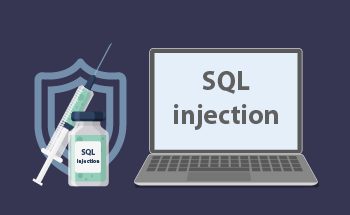Introduction to Hyperconverged Solutions: A Comprehensive Overview
10:49, 28.03.2024
Understanding Hyperconverged Infrastructure
Hyperconverged is a framework that is responsible for unifying software, storage, networking, and computing in one system. The necessity of such unification lies in higher scalability and minimization of the data center complexity. This type of architecture virtualizes and integrates these resources into a system.
Hyperconverged platforms consist of virtualized networking, a hypervisor for computing, and defined storage for software, and usually, they function on standard servers. With this stack, it is possible to reach savings in costs, higher performance characteristics, and at the same time excluding the necessity for the external SAN.
A hyper-converged system can be either bought as standalone software or an integrated solution from a certain vendor. Both standalone software and hyperconverged appliances are beneficial and have full features. The major variability between these options are deployment methods, prices, and pluses.
Exploring the Benefits of Hyperconverged Infrastructure Systems
If speaking about the price range, there is a huge flexibility for the spending. However, the level of investment fully correlates with the benefits you are getting in the long run. More often than not, the spending on hardware is around 80 percent of the total sum and the software costs are all the rest. That allows users to get the maximum level of flexibility and usage of the needed software and hardware according to their requirements.
The performance characteristics of the hyper-converged infrastructure fully depend on personal requirements and business goals. There are almost no limitations and you can get the highest possible workload. That is possible because most vendors offer entry-level HDD as well as HCI appliances.
One more great plus of this type of infrastructure is getting both storage capacity and computer power. With the help of nodes, you can easily scale the business. When you know the exact number of nodes you need to get the business growth, that significantly simplifies the budget planning for the following year.
The response time can be greatly increased because of the hyper-converged infrastructure incorporation. The latency is eliminated when compared with the traditional host-to-SAN requirements. This is possible to achieve because hosts and storage are in one physical box and that improves the response time characteristics.
As you see, switching to the hyper-converged system is way more beneficial than a traditional approach, not only because of simplified scalability, but it is also possible to reach higher redundancy.
DataCore’s Hyperconverged Infrastructure Solution: A Closer Look
How Hyperconvergence Operates
Through one toolset of integrated technologies is managed as one system in hyperconvergence. Usually, hyperconverged consists of 3 hardware nodes and that system can be easily increased by adding additional nodes. A cluster is a term that relates to a group of nodes.
To get a more practical understanding of how this system functions, let’s begin with standard questions that you need to reply to before the creation of any type of environment, some of them are:
- What is the total number of needed storage capacity?
- How much memory and CPU do I need for VMs?
- Whether 2 separate data centers needed for data spread and better redundancy?
- How many active replicas of the data do I actually need?
Once you have replied to the above-listed questions, you will need to determine the hardware specs for every node in the cluster. These are mathematical figures that are extremely important. In case you don’t want to bother with all these calculations, a great option is to chat with a technical expert who will be responsible for the numbers related to hardware specs per every node.
Every node should have configured and installed hypervisor. The following stage should be related to the installation of the network for VM traffic, management, and storage traffic. The ideal variant for such a situation will be to divide all the traffic types and here the main recommendation is - don’t push them via 1-2 links. If pushing them via the 2 network links, at some point it will provoke huge latencies.
In case you have decided to purchase a hyperconverged appliance, it more often than not comes together with SAN controllers that are responsible for local storage and I/O traffic. Every such preinstalled controller is a VM in the hypervisor and it manages the hardware resources of the local node.
Except for the already mentioned functions, the SAN controller is also responsible for erasure coding, I/O caching, auto-tiering, data migrations, snapshots, asynchronous replication, deduplication, and others. In addition, it executes data protection and cloud integration.
As a rule, for the purposes of simplification, there is one console that is connected to all the available nodes. So, it becomes way easier to manage every SAN controller and execute tasks for one window. Just imagine how tiring it will be to log in to several SAN environments on a daily basis.
If you decide to choose a software approach, then you would rather check whether the existing server has the needed minimal requirements prior to the installation. To maximize the hyperconverged soft efficiency, you will definitely need certain hardware.
Examining Typical Use Cases of Hyperconverged Infrastructure
Initially, hyperconvergence was used for VD (virtual desktop) infrastructure, however, extremely quickly companies started to use it for scaling of the resource, and also for management and deployment simplification.
Such huge corporations as Splunk and Oracle have approved some hyper-converged systems. The list of such companies is not limited to Oracle, there are plenty of others. For reaching this high-workload demand, a huge importance is in the proper hardware.
Hyperconverged systems can function with such workloads as OLTP and OLAP, and that proves they can effectively function with other workloads as well. For instance, they work with EMR system, email server, and CRM server.
MLB Network is using this type of model in order to improve its entertainment and media environment. Lots of hospitals are gradually implementing this system and testing everything on the small departments at first.
DataCore’s SANsymphony: A Deep Dive
Differences Between Hyperconverged and Converged Infrastructure
There are some cases when converged and hyper-converged solutions are mixed up as a perfect choice for some users. Of course, there are a couple of similarities between these options. When speaking about one fundamental difference it is the following – hyper-converged is mainly focused on software while converged is more oriented toward hardware characteristics.
Converged appliances function by unifying storage and computing which is beneficial for the local functioning of applications and it greatly improves performance. Such apps can be anything starting from web servers, relational databases, and ending with Exchange. However, this variant doesn’t offer integration between storage layers and the host.
When talking about hyperconverged infrastructure, it guarantees a better integration of the components through the software. Due to this, the management process is more efficient. The users have an entire view of the storage space and it is easy to move virtual disks from one node to another without influencing the active VM. This fully integrated system simplifies the administration.
Surveying Hyperconverged Infrastructure Vendors
The technology of hyper-converged infrastructure began with such companies as SimpliVity, Maxta, Scale Computing, and Nutanix. After these startups, such huge storage and server vendors as HPE, Cisco, NetApp, Lenovo, and Dell appeared on the market. During the period of last couple of years, some huge vendors acquired several startups. They not only purchased smaller firms but also developed their own products.
In order to create appliances, some software companies are partnering with server hardware corporations. Because of such partnerships, it became so much easier for the users to select needed software and deploy it on any server usually on Lenovo, HP, Cisco, or Dell EMC. This flexibility of choice promotes other initiatives and develops the market in general.
There are approximately 20 major vendors on the market. Among them we can stand out such as Huawei, HPE, VMware, Dell EMC, and more. So, let’s discuss some of the major companies in order to get general information on this topic.
According to the statistical data, the biggest company that owns 39 percent of the infrastructure market is VMware. This firm uses object-based storage architecture where every object represents a data block. The major benefit of VMware is the diversity of the variants. Users can easily build the deployment around certain use cases.
Another popular vendor is called Nutanix. It owns approximately 23 percent of the market according to the data which was gathered in 2021. This company is popular because of its high-performance characteristics, easiness of interface, simple installation, and of course intuitivity of the users’ interface. If speaking about the possible drawbacks we can mention the price range. You may need to invest a huge budget in case it's your initial payment.
One more option is Dell EMC. The company has almost 5 percent of the market. The best about this specific variant is the mixture of Dell servers together with EMC storage. One more partner or the company is Eaton and that is important for maintaining and creating other implementations. The major advantage of this option is that users have access to the universal shop where you can get absolutely anything relating to the hyperconverged system. Moreover, the prices at this shop are less expensive than in the competitors.
When talking about the users’ choice after reviewing the discussed vendors, you should initially determine whether you need software only or an HCI appliance. Then check the pluses and minuses of each vendor and, more importantly, specify your goals.


